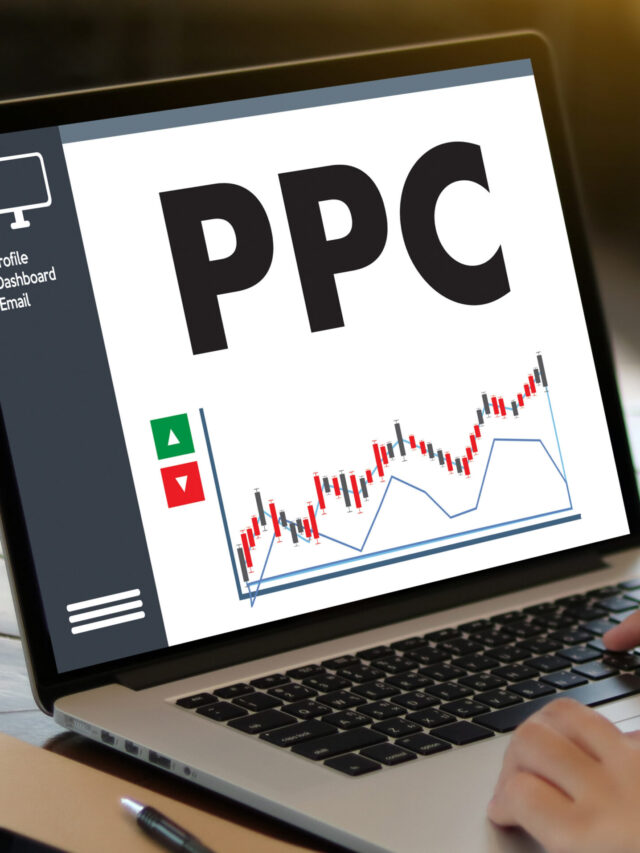On this page you will read detailed information about Exploring Search Engine Marketing.
In the digital age, where online visibility can determine a company’s success or failure, understanding the intricacies of Search Engine Marketing (SEM) is crucial for any business leader. As you navigate the ever-evolving landscape of digital marketing, SEM emerges as a powerful tool to enhance your brand’s online presence, driving targeted traffic and increasing conversion rates. This article delves into the mechanics of SEM, unraveling its complexities and highlighting its significant impact on business growth. By mastering SEM strategies, you can position your business at the forefront of search engine results, ensuring optimal visibility and competitive advantage in today’s digital marketplace.
What is Search Engine Marketing (SEM)?
Understanding Search Engine Marketing
Search Engine Marketing (SEM) is a digital marketing strategy employed to increase the visibility of websites on search engine results pages (SERPs). It involves both paid advertising, often through pay-per-click (PPC) models, and organic strategies to drive traffic. Unlike Search Engine Optimization (SEO), SEM focuses predominantly on paid search results, utilizing keywords and search terms to optimize ads and target potential customers effectively. By leveraging SEM, businesses can capture attention quickly and engage users actively searching for relevant products or services.
Key Components of SEM
Paid Search Ads: At the core of SEM are paid advertisements. These ads are displayed prominently on SERPs, typically above or beside organic results, allowing companies to gain immediate visibility. Advertisers bid on keywords relevant to their business, and the ad’s placement is determined by the bid amount and ad quality. This ensures that businesses can reach their target audiences effectively and efficiently.
Keyword Strategy: Keywords form the foundation of SEM. Selecting the right keywords is crucial in driving targeted traffic to your site. Businesses must research and choose keywords that align with search intent and match the interests of their target audience. Keywords should be strategically incorporated into ad copies to increase relevance and improve ad performance.
Advantages of SEM
Utilizing SEM can yield several benefits for businesses:
- Immediate Results: Unlike SEO, which may take time to show results, SEM provides immediate visibility and can quickly drive traffic to a website.
- Targeted Advertising: SEM allows for precise targeting options, such as location, language, and device, ensuring that ads reach the most relevant audience segments.
- Measurable ROI: With robust analytics and tracking, SEM provides clear data on ad performance, allowing businesses to measure return on investment accurately and optimize campaigns for better results.
In sum, understanding what search engine marketing entails and incorporating its components into your digital marketing strategy can significantly amplify your business’s online presence and drive substantial growth.
The Core Components of SEM: SEO vs. PPC
Understanding SEO: The Organic Approach
Search Engine Optimization (SEO) is the backbone of Search Engine Marketing (SEM) that focuses on improving a website’s visibility in organic (non-paid) search results. This involves optimizing various elements of your website to align with search engine algorithms. You will want to focus on keyword selection, quality content creation, and robust link-building strategies.
SEO is distinguished by its long-term, sustainable results, although it requires consistent effort and patience. By enhancing your site’s relevance and authority, you can achieve a higher ranking on search engine results pages (SERPs). An effective SEO strategy can lead to increased organic traffic, bolster brand credibility, and improve user experience.
Exploring PPC: The Paid Pathway
Pay-Per-Click (PPC) advertising represents the paid segment of search engine marketing. It allows businesses to bid on ad placement in a search engine’s sponsored links when someone searches using a keyword related to their business. Unlike SEO, which takes time to manifest results, PPC offers immediate visibility and targeted traffic.
The effectiveness of PPC lies in its flexibility and precision. You can set specific budgets and target demographics, and enjoy detailed analytics to measure campaign performance. Although PPC requires financial investment, it provides direct control over your marketing efforts and can yield quick returns on investment if managed strategically.
Balancing SEO and PPC in SEM
When exploring what is search engine marketing, it becomes evident that both SEO and PPC offer unique advantages. A balanced approach, combining both elements, can lead to a more comprehensive SEM strategy. By capitalizing on the strengths of each – the enduring benefits of SEO and the immediacy of PPC – businesses can maximize their online visibility and reach their target audience more effectively.
How Search Engine Marketing Impacts Business Success
Enhancing Visibility and Reach
In the digital age, visibility is a crucial component of business triumph. Search engine marketing (SEM) elevates a business’s online presence by ensuring its advertisements appear prominently on search engine results pages. Through strategic use of keywords, businesses can target audiences actively seeking their products or services. This heightened visibility not only increases web traffic but also enhances brand recognition, making it easier for potential customers to discover and engage with your business.
Driving Targeted Traffic
SEM’s precision targeting capabilities allow businesses to attract a highly relevant audience. By leveraging data-driven insights, companies can tailor their advertisements to specific demographics, geographic locations, and even user behaviors. This method ensures that the traffic driven to a website is genuinely interested in the offerings, thus increasing the likelihood of conversion. As a result, SEM can significantly boost sales and revenue by converting casual browsers into dedicated customers.
Cost-Effective Advertising
One of the notable advantages of search engine marketing is its cost-effectiveness. Unlike traditional advertising methods, SEM operates on a pay-per-click basis, meaning businesses only incur costs when interested users click on their ads. This model ensures that marketing budgets are spent efficiently, maximizing return on investment. Furthermore, the flexibility to adjust campaigns in real time empowers businesses to optimize their strategies for better results.
Search engine marketing is an invaluable tool that can transform how businesses connect with their audience. By enhancing visibility, driving targeted traffic, and offering a cost-effective advertising solution, SEM plays a pivotal role in shaping business success in the digital landscape.
Key Strategies for Effective SEM
Understanding Search Engine Marketing Fundamentals
Successful search engine marketing (SEM) requires a deep understanding of its core components. At its essence, SEM is a digital marketing strategy used to increase the visibility of a website in search engine results pages. It often involves the use of paid advertising. One of the primary aspects of SEM is identifying and targeting the right keywords that align with your business objectives. These keywords should reflect what potential customers are searching for and act as the foundation of any SEM campaign.
Crafting Compelling Ad Copy
Creating engaging and relevant ad copy is crucial in SEM. It serves as the first point of contact with your target audience. Effective ad copy should be concise yet informative, emphasizing the unique selling propositions of your offerings. Including a clear call-to-action (CTA) can guide potential customers towards taking the desired action. A/B testing various versions of ad copy can provide insights into what resonates with your audience, allowing for continuous optimization.
Leveraging Ad Extensions
Ad extensions enhance the visibility and effectiveness of your SEM efforts by providing additional information directly in the ad. These extensions can include site links, call buttons, or location information, making it easier for users to engage with your business. Utilizing ad extensions can improve click-through rates, offering more value to potential customers and ultimately driving higher engagement and conversions.
Analyzing and Adapting Strategies
A critical component of SEM is the continuous analysis and adaptation of strategies. Regularly reviewing campaign performance through metrics like click-through rates, conversion rates, and return on ad spend can offer actionable insights. This data-driven approach allows businesses to refine their strategies, ensuring that they remain aligned with evolving market trends and consumer behaviors. By staying responsive to these insights, businesses can maximize their SEM effectiveness and achieve sustainable growth.
In the previous post, we had shared information about Search Advertising: Understanding Its Role in Digital Marketing, so read that post also.
Measuring the ROI of Your SEM Campaigns
Understanding Return on Investment (ROI) in SEM
In the realm of search engine marketing (SEM), measuring the return on investment (ROI) is crucial to determine the effectiveness of your campaigns. ROI provides a quantitative measure of the benefits gained relative to the costs incurred. By understanding ROI, you can make informed decisions about where to allocate your marketing budget for maximum impact. To calculate ROI, subtract the cost of the SEM campaign from the total revenue generated by the campaign, then divide by the cost of the campaign and multiply by 100 to get a percentage. This formula helps you assess the profitability of your SEM efforts.
Key Metrics for Evaluating SEM Performance
Several key metrics play a pivotal role in evaluating the performance of your SEM campaigns. Click-through rate (CTR) is a vital indicator, reflecting the percentage of users who click on your ad after seeing it. A high CTR suggests that your ad is relevant and engaging to your target audience. Conversion rate is another essential metric, measuring the proportion of clicks that result in a desired action, such as a purchase or sign-up. A high conversion rate indicates that your landing page and overall strategy effectively persuade users to act. Additionally, cost per acquisition (CPA) provides insights into how much you spend to acquire a single customer, allowing you to gauge the efficiency of your campaign.
Strategies to Optimize SEM ROI
To maximize the ROI of your SEM initiatives, consider implementing targeted strategies. Begin by conducting thorough keyword research to identify high-value terms that align with your audience’s search intent. Regularly reviewing and refining your ad copy can enhance its appeal and relevance. Implementing A/B testing for different ad variations can provide insights into which elements drive better performance. Furthermore, leveraging analytic tools to track user behavior on your site can highlight areas for improvement, ensuring that your SEM strategies continue to evolve and yield optimal results. By diligently applying these approaches, you can enhance your SEM campaigns’ effectiveness and improve your ROI.
Conclusion
In exploring the vast landscape of search engine marketing (SEM), you have uncovered its critical role in shaping business success in the digital age. By strategically leveraging SEM, you can enhance your online visibility, attract targeted traffic, and ultimately drive significant growth. As competitors continue to vie for attention in this dynamic environment, your understanding and application of SEM principles will distinguish your brand. Embracing these insights equips you to navigate the ever-evolving digital marketplace with confidence, ensuring that your business not only competes but thrives in today’s search-driven world. Embrace SEM as a cornerstone of your digital strategy.
Disclaimer
The content published on the Marketyra blog is for educational and informational purposes only. While we strive to share accurate and up-to-date digital marketing tips, strategies, and trends, we do not guarantee any specific results. Readers are advised to use their own judgment before applying any tips or advice provided. Marketyra is not liable for any losses, damages, or issues arising from the use of blog content.
So friends, today we talked about Exploring Search Engine Marketing, hope you liked our post.
If you liked the information about Exploring Search Engine Marketing, then definitely share this article with your friends.
👉 Need help with SEO or digital marketing services?
Feel free to call us at 📞 +91-9306925861, email us at 📧 admin@marketyra.com to get in touch!







